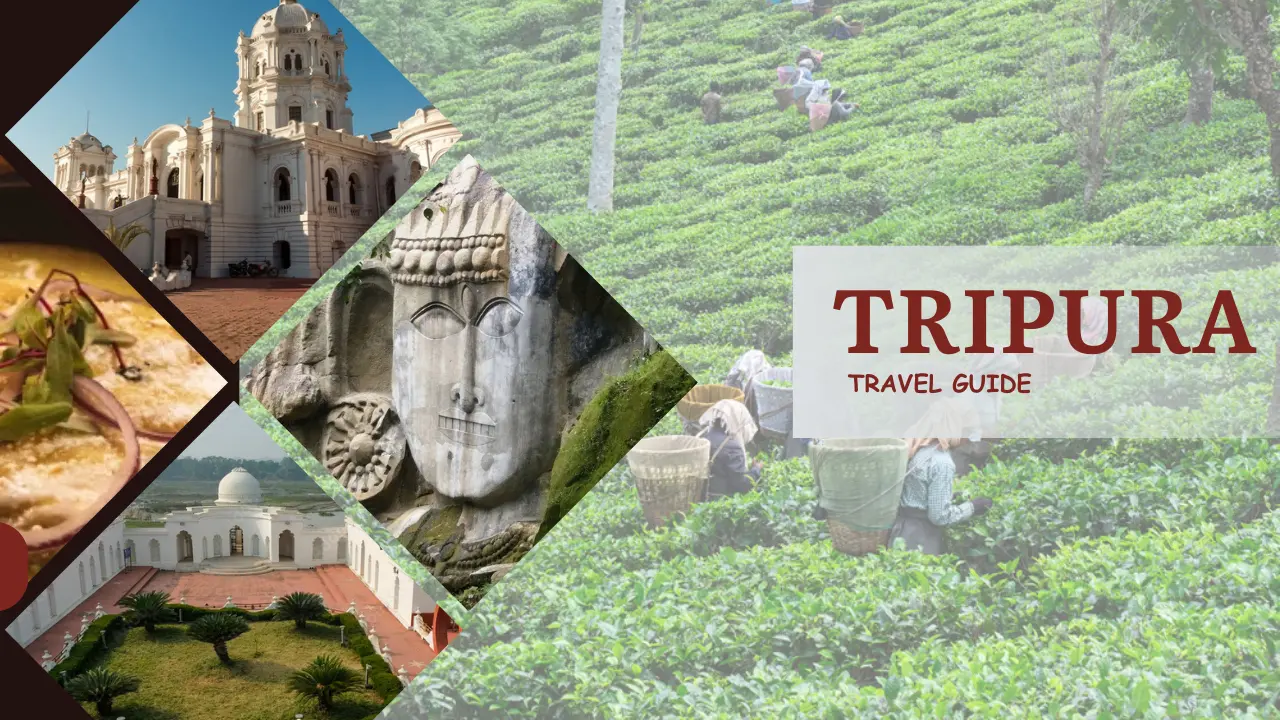Tripura is a lesser-known destination near the northeastern part of India, combining nature, culture and history for those who venture off the beaten path. Tripura is a goldmine right from dense forests to ancient temples and just waiting to be explored. This is a comprehensive guide to planning your perfect vacation in Tripura. Let the adventure begin!
Tripura is one among the Seven Sister states in northeast India. It is surrounded by Bangladesh on three sides, and there are various ethnic communities as well as rich cultural heritage. Tripura is not yet in the mainstream tourist map but it has plenty to offer adventurous travelers. Lush forests, quaint hamlets, royal palaces and centuries-old temples make for unforgettable holiday. Agartala the charming capital serves an ideal destination to wind up all the mystical corners of this lesser-visited state. Tripura offers to meet travelers with its easy-going atmosphere, friendly people, tasty food, and many attractions.
How to Reach Tripura:
Taking Flight:
Agartala Airport (IXA) serves as the sole domestic gateway to Tripura, situated roughly 12 kilometers northwest of Agartala city. Renowned airlines like Air India, SpiceJet, and IndiGo operate regular flights connecting Agartala to prominent cities like Kolkata, Delhi, Guwahati, and Chennai. Upon arrival, taxis and auto-rickshaws are readily available to transport you to your desired location within the city.
Train Travel:
While Tripura lacks its own railway network, the nearest train station lies in the Unakoti district, approximately 140 kilometers from Agartala. Known as Kumarghat Railway Station, it boasts excellent connectivity to major Indian cities like Kolkata, Delhi, Guwahati, Chennai, and Bangalore. Taxis, auto-rickshaws, and buses are available at the station to take you to Agartala or other parts of Tripura.
Exploring by Road:
Tripura boasts a well-developed network of national highways and state roads, ensuring seamless connectivity to other parts of India. National Highway 44 (NH 44) serves as the primary artery connecting Tripura to other northeastern states and major cities like Guwahati, Shillong, and Kolkata. Opt for buses or car rentals to explore Tripura via road.
Best time to visit Tripura:
The best time to visit Tripura is during the winter months, from October to February. The weather is pleasant during this time, with cool temperatures ranging from 10°C to 26°C. There is also little rainfall, making it ideal for sightseeing and outdoor activities.
Here’s a breakdown of Tripura’s seasons:
- Summer (March to May): Summers in Tripura are hot and humid, with temperatures reaching up to 33°C. This may not be the most comfortable time for sightseeing, especially for those not accustomed to the heat.
- Monsoon (June to September): Tripura receives heavy rainfall during the monsoon season. This can lead to landslides and roadblocks, making travel difficult. The high humidity can also be uncomfortable.
- Winter (October to February): As mentioned earlier, winter is the best time to visit Tripura. The weather is pleasant, with clear skies and little rain. This makes it ideal for exploring the state’s many temples, palaces, and wildlife sanctuaries
Top Attractions:
Ujjayanta Palace:
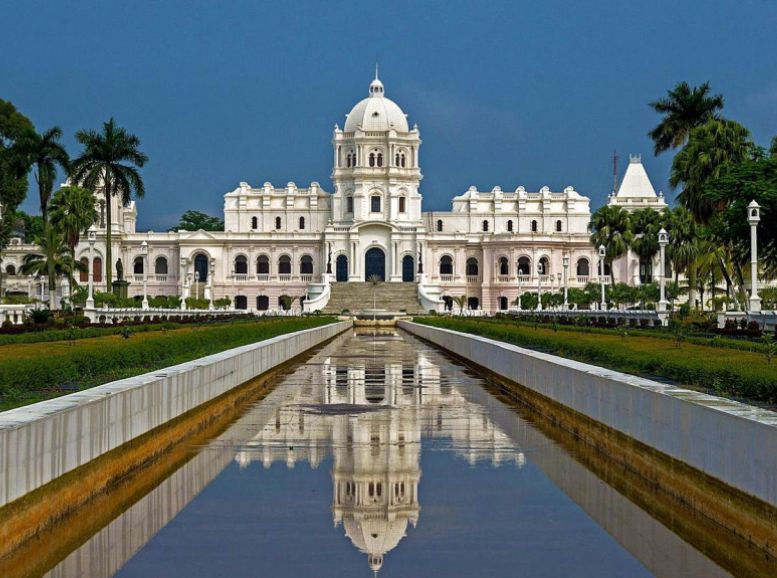
Ujjayanta Palace, an emblem of wealth and cultural legacy, proudly stands in Agartala, the capital city in India. This grand palace, erected in 1901 under the patronage of Maharaja Radha Kishore Manikya, was meticulously crafted by British architect Sir Alexander Martin. Its architectural marvel seamlessly blends Hindu, Muslim, and Indo-Saracenic influences, adorned with majestic domes, intricately carved pillars, and elegant balconies. Encircled by verdant gardens and expansive lawns, Ujjayanta Palace served as the royal abode until 1949, when the princely state of Tripura integrated into the Indian Union.
Unakoti:
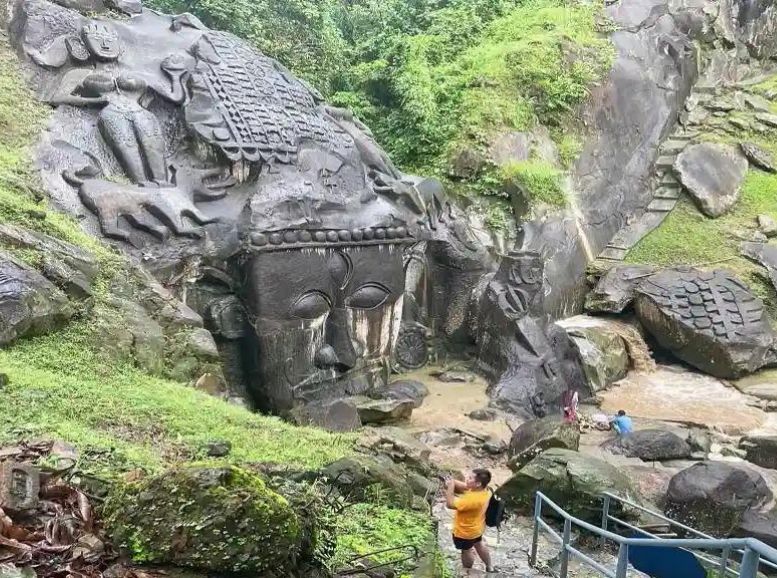
Unakoti, located in the northeastern state of Tripura, India, is a sacred site renowned for its ancient rock carvings and sculptures. The name “Unakoti” translates to “one less than a crore” in Bengali, referencing the legend that there were originally one crore (ten million) sculptures carved into the rock face, but one less than that number remains due to a divine curse. The site is believed to date back to the 7th-9th centuries CE and is dedicated to Lord Shiva, with various sculptures and reliefs depicting deities, mythical creatures, and celestial beings. The central attraction is a massive rock-cut figure of Lord Shiva, known as Unakotiswara Kal Bhairava, which stands at a height of about 30 feet.
Neermahal:
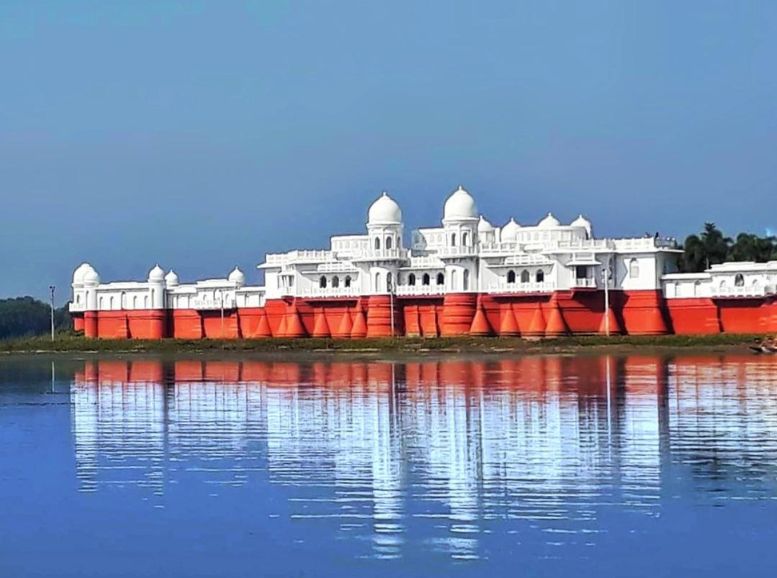
Neermahal, translating to “Water Palace” in English, is a captivating architectural marvel nestled amidst the tranquil waters of Rudrasagar Lake in Tripura, India. Built in the 1930s by Maharaja Bir Bikram Kishore Debbarman, the erstwhile ruler of Tripura, Neermahal stands as a testament to the exquisite blend of Indian and Mughal architectural styles. This picturesque palace was designed as a summer retreat for the royal family and boasts a striking fusion of red brick and white marble, with elegant domes, arched balconies, and intricately carved motifs adorning its façade. Surrounded by the serene waters of Rudrasagar Lake, Neermahal exudes a sense of tranquility and grandeur, making it a popular tourist destination and a symbol of Tripura’s rich cultural heritage.
Tripureswari Temple:
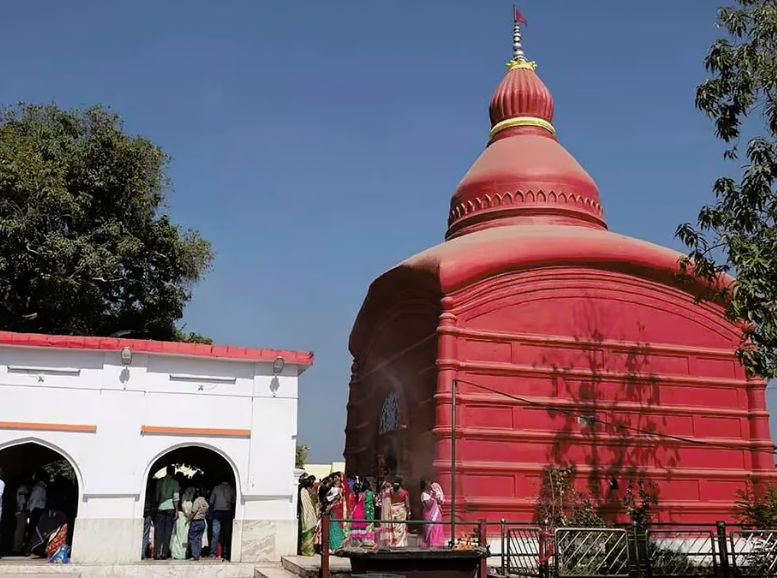
The Tripureswari Temple stands as a sacred sanctuary nestled in the heart of Udaipur, a city in the northeastern state of Tripura, India. Dedicated to Goddess Tripureswari, the presiding deity of Tripura, this revered temple is steeped in mythological and historical significance. Legend has it that the temple dates back over centuries, with its origins tracing back to the ancient times of the Mahabharata era. The architecture of the temple reflects a harmonious blend of Hindu and Bengali styles, characterized by ornate carvings, towering spires, and vibrant colors. Devotees flock to this holy site to seek the blessings of Goddess Tripureswari, believed to fulfill the wishes of her devotees and bestow prosperity and protection upon them.
Sepahijala Wildlife Sanctuary:
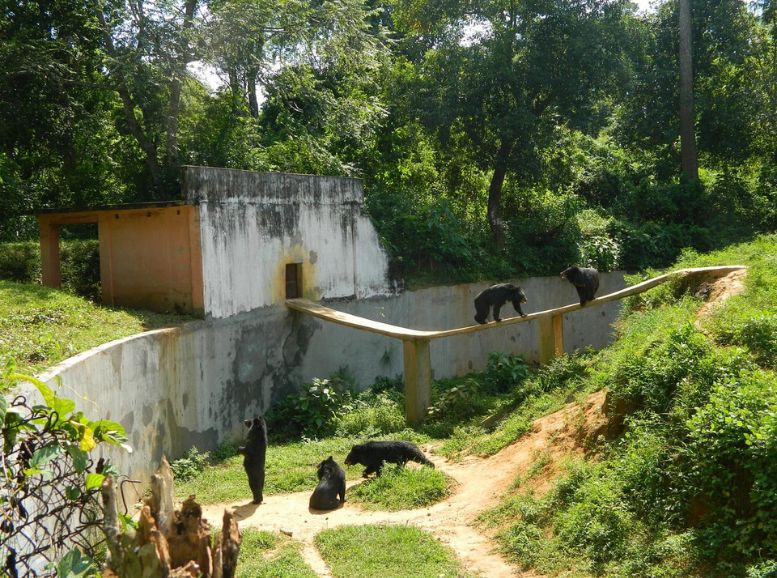
Sepahijala Wildlife Sanctuary, nestled in the lush greenery of Tripura, India, stands as a haven for biodiversity enthusiasts and nature lovers alike. Spread over an expansive area, this sanctuary is renowned for its rich flora and fauna, offering visitors a glimpse into the region’s vibrant ecosystem. Established in 1972, Sepahijala is home to a diverse range of species, including rare and endangered animals such as clouded leopards, spectacled langurs, and Asian elephants. The sanctuary’s verdant forests, tranquil lakes, and winding trails provide a picturesque setting for wildlife enthusiasts to explore and appreciate the wonders of nature.
Jampui Hills:
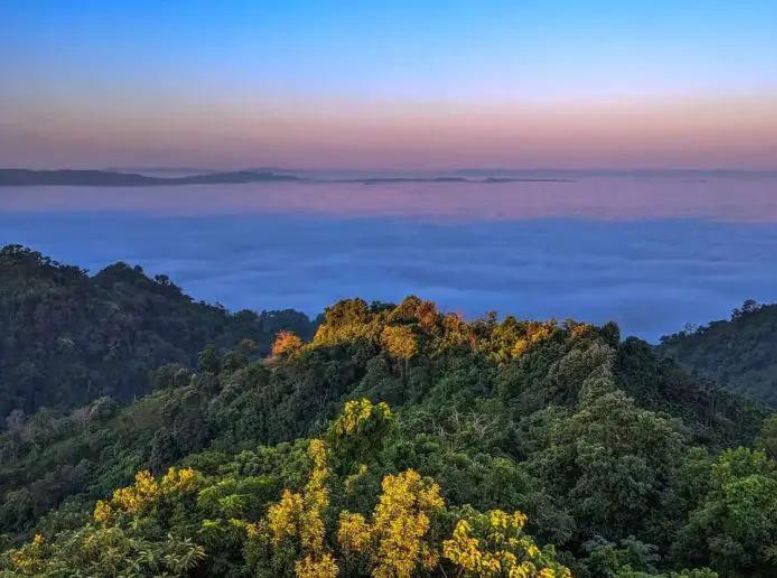
Jampui Hills, a picturesque gem nestled in the northeastern state of Tripura, India, beckons travelers with its serene beauty and refreshing climate. Situated near the India-Bangladesh border, these verdant hills rise majestically, offering panoramic vistas of undulating landscapes and lush greenery. Renowned for its cool and pleasant weather throughout the year, Jampui Hills serves as an idyllic retreat for those seeking respite from the sweltering heat of the plains. The region is famed for its vibrant orange orchards, which thrive in the favorable climate, earning Jampui the moniker “The Orange Bowl of Tripura.
Heritage Park:
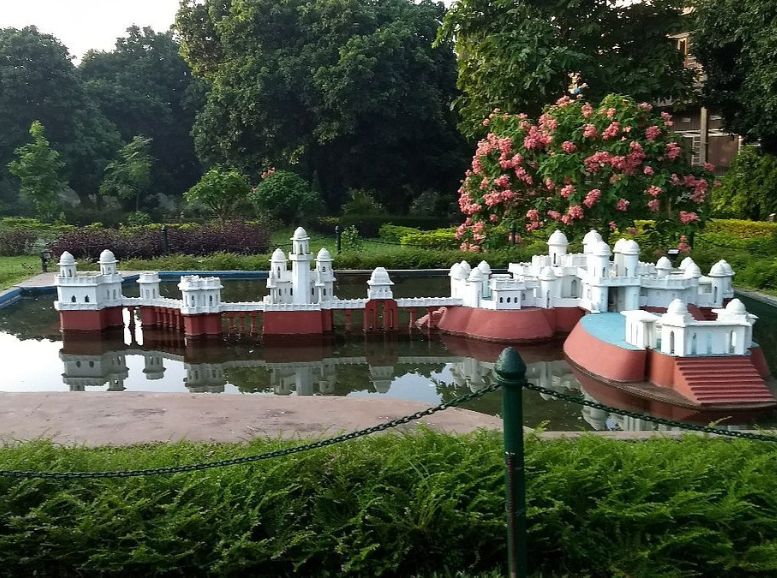
The Heritage Park, located in Agartala,India, is a cherished cultural landmark that showcases the rich heritage and history of the region. Spread across sprawling grounds, the park is meticulously designed to commemorate the diverse ethnicities, traditions, and historical events that have shaped Tripura’s identity over the centuries. Visitors to the Heritage Park are greeted by intricately crafted sculptures, monuments, and installations depicting the cultural tapestry of the state, including representations of tribal art, royal insignia, and architectural marvels.
Rose Valley Amusement Park:
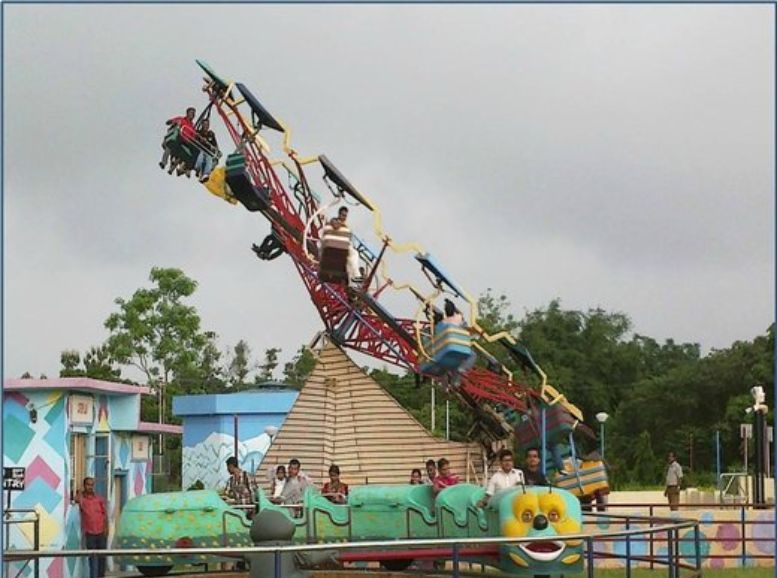
Rose Valley Amusement Park, situated in Agartala,is a dynamic destination offering diverse recreational activities and entertainment suitable for visitors of all ages. This expansive amusement park boasts an array of rides, attractions, and facilities, catering to families, groups of friends, and thrill-seekers alike. From thrilling roller coasters and water slides to gentle kiddie rides and arcade games, there’s something to delight every guest. The park’s verdant surroundings and meticulously maintained landscapes provide a picturesque setting for a day of enjoyment and adventure.
Kalapania Nature Park:
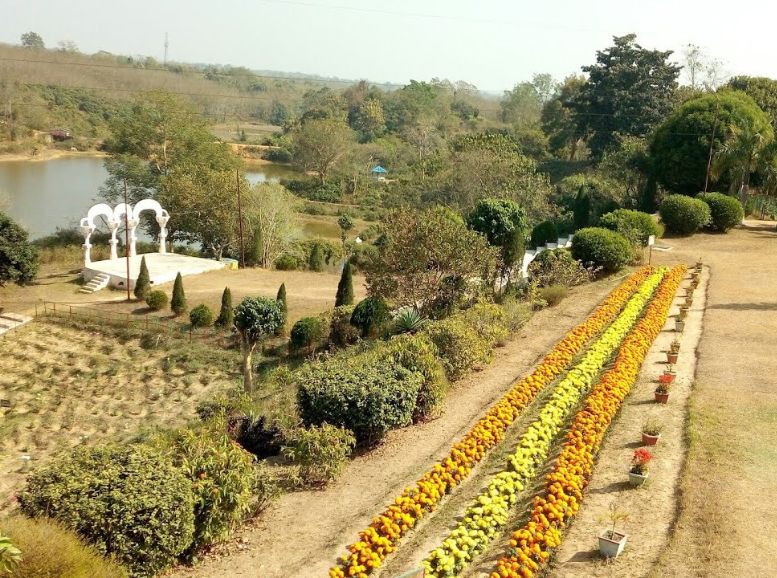
Kalapania Nature Park, nestled amidst the serene landscapes of Tripura, India, offers visitors a tranquil retreat into the lap of nature. This picturesque park is renowned for its lush greenery, scenic trails, and panoramic vistas, making it a haven for nature enthusiasts and outdoor adventurers. Visitors can explore winding pathways that meander through dense forests, offering glimpses of diverse flora and fauna along the way. The park’s pristine beauty is enhanced by the presence of shimmering water bodies and cascading waterfalls, providing serene spots for relaxation and rejuvenation.
Venuban Vihar:
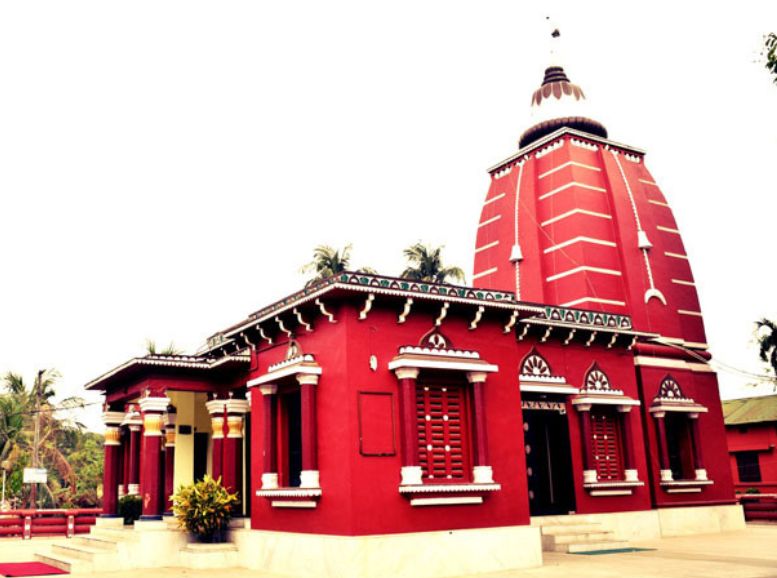
Venuban Vihar, perched atop a serene hill in Agartala, Tripura, is a tranquil Buddhist monastery that beckons visitors with its serene ambiance and spiritual aura. Surrounded by verdant landscapes and panoramic vistas, this sacred retreat offers a peaceful sanctuary for meditation, introspection, and spiritual rejuvenation. The monastery’s architecture reflects traditional Buddhist design, featuring intricate carvings, colorful murals, and ornate statues of Buddha, Bodhisattvas, and other deities.
Beyond Sightseeing:
Local Markets:
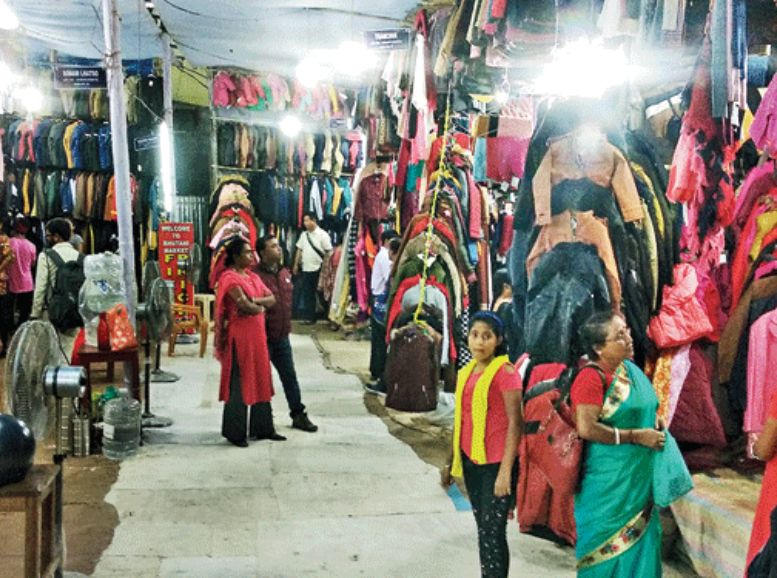
Tripura is a shopper’s paradise with its bustling local markets. Scan handicrafts, textiles, pottery, and metalware in Udaipur Amarpur. Don’t forget to try out the bamboo and cane products of Gandacherra. Buy some exotic fruits, spices and the famous Tripuri lemons at local markets.
Indigenous Tribal Villages:
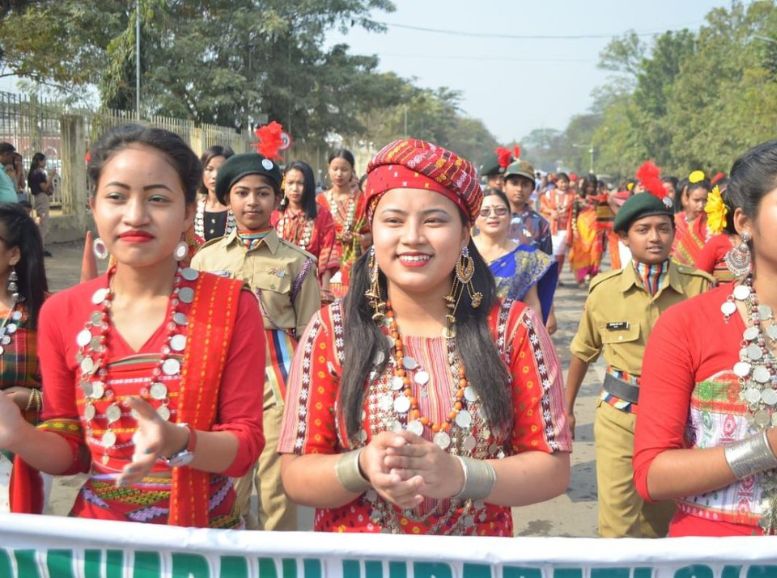
Meet the tribal population of Tripura such as Tipra, Reang, Jamatia and Noatia. Many villages of the Jampui Hills and surrounding Unakoti are friendly to visitors.
Tea Plantations:
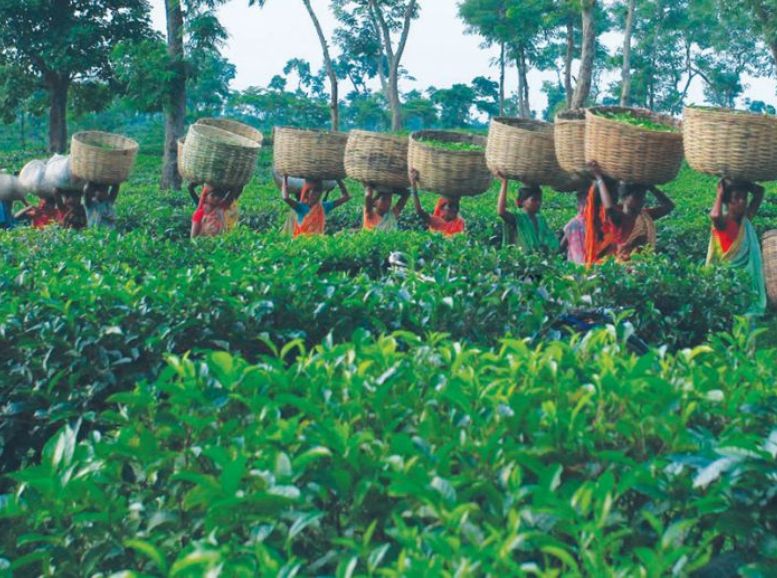
Tripura is replete with prosperous tea gardens that produce high-quality organic tea. Go for plantation visits such as Bidyanagar Tea Estate or Lebachara Tea Estate in North Tripura and sample the process of plucking your own leaves before savouring a fresh brew overlooking the estates.
Local Delights:
- Tribal Villages and Cultural Immersion: Tripura is home to several indigenous tribal communities, each with its own distinct culture, traditions, and way of life.
- Artisanal Crafts and Workshops: Tripura boasts a vibrant handicrafts scene, with artisans proficient in weaving, bamboo and cane crafting, pottery, and wood carving.
- Culinary Delights and Food Tasting: Exploring Tripura’s unique cuisine is a must-do experience.
- Tea Plantations and Tastings: Tripura is renowned for its lush tea plantations, particularly in areas like Durgabari and Hiracherra.
- Nature Exploration and Eco-Tourism: Tripura’s scenic landscapes provide ample opportunities for nature enthusiasts.
- Festivals and Cultural Celebrations: Tripura’s calendar is filled with vibrant festivals and cultural events that highlight the region’s rich heritage.
Food Delights:
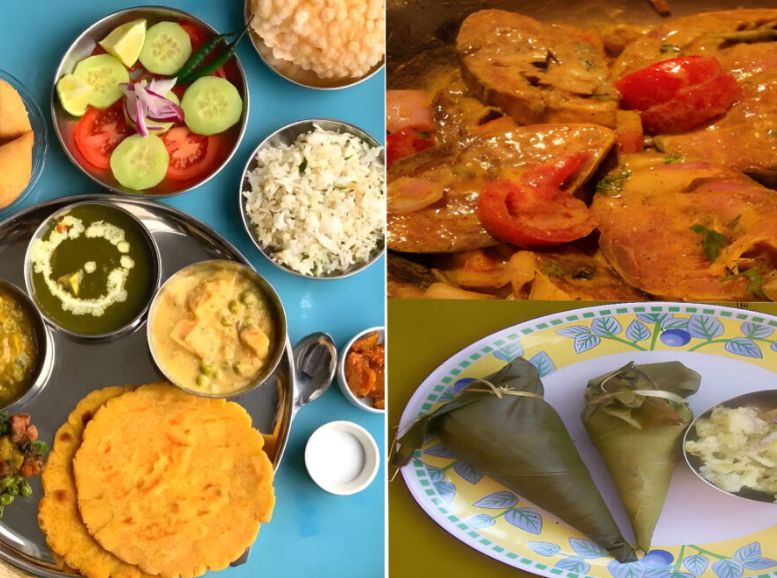
- Muya Borok: A staple of Tripuri cuisine, Muya Borok is a delectable dish made from fermented bamboo shoots and pork, seasoned with local herbs and spices, providing a unique and flavorful taste.
- Chakhwi: This spicy meat stew, prepared with pork, chicken, or fish, and combined with vegetables like bamboo shoots, beans, and pumpkin, offers a delightful explosion of flavors, enriched by chili, ginger, garlic, and aromatic spices.
- Wahan Mosdeng: A fiery chili chutney made from roasted green chilies, garlic, and spices, Wahan Mosdeng adds a zesty kick to any meal, embodying the vibrant and bold flavors of Tripura.
- Bewang Kawl: A traditional Tripuri dessert, Bewang Kawl is crafted from black rice, coconut milk, and jaggery, delivering a rich and creamy texture coupled with the sweet indulgence of jaggery.
- Bai: Bai, a comforting vegetarian dish, showcases mixed vegetables simmered in a luscious broth of coconut milk, lentils, and spices, offering a hearty and satisfying meal served alongside rice.
- Chuak: A quintessential Tripuri beverage, Chuak is crafted from fermented rice and water, presenting a tangy and refreshing drink cherished during festive occasions and gatherings.
Local Transportation:
Transportation in Tripura offers a diverse array of options to cater to the needs of both locals and tourists. The state boasts a well-developed road network, comprising national highways, state highways, and district roads, served by state-run and private buses as well as taxis. Rail connectivity is provided by a single railway line linking Agartala with Lumding in Assam, offering a comfortable journey through picturesque landscapes. Maharaja Bir Bikram Airport near Agartala connects Tripura to major Indian cities through domestic flights. In remote areas, waterways play a significant role in transportation, primarily for ferrying goods and connecting villages along rivers. Within cities, auto-rickshaws, cycle-rickshaws, and taxis are popular modes of local transport, while tourists have access to rental cars, motorcycles, and bicycles for exploring the state’s attractions.
Packing Tips:
- Lightweight Clothing: Tripura experiences a humid subtropical climate, so lightweight and breathable clothing made of natural fabrics like cotton is recommended.
- Rain Gear: Tripura receives significant rainfall, especially during the monsoon season (June to September).
- Comfortable Footwear: Given the possibility of exploring nature trails and visiting historical sites, comfortable walking shoes or sandals with good grip are essential.
- Sun Protection: Protect yourself from the sun’s harsh rays by packing sunscreen with a high SPF, sunglasses, a wide-brimmed hat, and lightweight clothing that covers your skin.
- Insect Repellent: Insect repellent is essential, particularly if you’re visiting forested areas or during the evening when mosquitoes are more active.
- Travel Documents: Ensure you have all necessary travel documents, including your passport, visa (if applicable), travel insurance, itinerary, and hotel reservations.
Travel Tips:
- Carry Cash: Carry some cash as ATMs are rare in remote areas.
- Book Advance: Book hotels well in advance during the periods of major festivals.
- Seek Advice: Be sure to seek advice from locals before consuming fruits or mushrooms picked in the forests.
- Explore: Visiting tribal villages or religious sites, dress properly and respect local customs.
- Research: Before your trip, research the destination thoroughly, including local customs, culture, and any travel advisories or safety concerns.
- Stay Informed: Stay updated on current events and local news while in Tripura.
- Travel Insurance: Purchase comprehensive travel insurance that covers medical emergencies, trip cancellations, and theft or loss of belongings.
- Health Precautions: Take necessary health precautions before traveling to Tripura.
- Safe Transportation: Opt for reputable transportation options when moving around Tripura.
- Respect Local Customs: Respect local customs, traditions, and cultural sensitivities during your visit to Tripura.
Safety tips:
1. Know Before You Go: Stay informed about current events in Tripura, including weather forecasts, local news, and any travel advisories from official sources. This will help you plan your trip effectively and avoid any unforeseen situations.
2. Respect the Culture: Tripura’s rich cultural heritage is a source of pride for its people. Be mindful of local customs, traditions, and religious practices to ensure a smooth and respectful experience.
3. Prioritize Your Health: Pack any medications you need and research medical facilities in your destination. Opt for bottled or purified water, and be cautious with street food to avoid getting sick.
4. Travel Safely: Choose reliable transportation options and prioritize safety. Always wear seatbelts in vehicles and helmets on motorbikes. Be extra cautious while navigating on roads.
5. Wildlife Encounters: When visiting wildlife reserves or exploring forests, adhere to park regulations. Maintain a safe distance from animals, and resist the urge to feed or provoke them in any way.
6. Stay Vigilant: Remain aware of your surroundings, especially in crowded areas, markets, and popular tourist spots. Keep your belongings secure to minimize the risk of theft or pickpocketing.
Conclusion:
A brief respite off the usual path could come to life from breathtaking scenery to compelling history. Its treasures cover lush forests, ancient rock-cut carvings, peaceful lakes, royal heritage and vibrant native cultures. For daring tourists looking for real adventures, Tripura provides a pleasant vacation with hospitable locals, fantastic food and old-world charm. So pack your bags and be spell bound by the magnificence of Tripura! Thanks for visiting Xplro .
Happy and safe travels! Or write your comments, share the advice of travelling in Tripura with us.
FAQs
- What are the top attractions in Tripura?
Noteworthy attractions in Tripura include Ujjayanta Palace, Neermahal, Tripura Sundari Temple, Sepahijala Wildlife Sanctuary, Unakoti, Jampui Hills, and the Tripura Government Museum.
- When is the best time to visit Tripura?
October to February is considered the best time to visit Tripura due to its pleasant weather.
- How can I travel to Tripura?
This State can be reached by air, rail, and road. The Maharaja Bir Bikram Airport serves as the primary airport, and the state is well-connected by the Indian Railways network. Additionally, state and private buses operate on well-maintained roads.
- Are there any cultural festivals during my visit?
Yes, Tripura hosts various cultural festivals throughout the year, including Garia Puja, Kharchi Puja, and Durga Puja.
- What accommodation options are available in Tripura?
Accommodation options in Tripura range from hotels, resorts, guesthouses, to homestays, catering to various budgets and preferences.
- Are there any trekking trails in Tripura?
Yes, trekking trails can be found in Jampui Hills, Trishna Wildlife Sanctuary, and Dumboor Lake, offering scenic views and adventure opportunities.
- What is the local cuisine of Tripura, and where can I try it?
The local cuisine includes dishes like Mui Borok, Chakhwi, and Wahan Mosdeng, which can be sampled at local restaurants, street food stalls, and markets.
- Are there any wildlife sanctuaries worth visiting in Tripura?
Yes, notable wildlife sanctuaries in Tripura include Sepahijala Wildlife Sanctuary, Trishna Wildlife Sanctuary, and Gumti Wildlife Sanctuary.
- What safety precautions should I take while traveling in Tripura?
Standard safety precautions include staying informed about local conditions, avoiding isolated areas at night, and safeguarding belongings.
- Can I explore neighboring states or countries from Tripura?
Yes, neighboring states like Assam and Mizoram can be explored during your trip. However, visiting neighboring countries requires additional arrangements and documentation.




